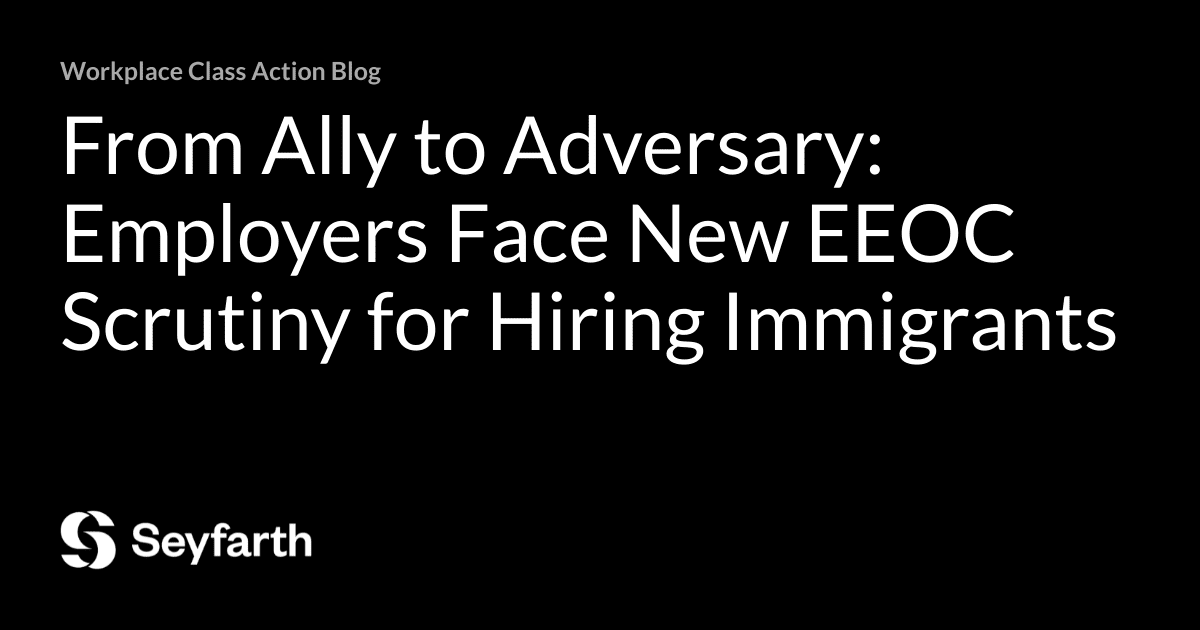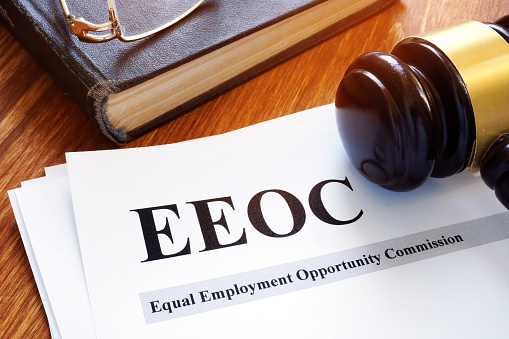
By: Taylor Iaculla, Andrew Scroggins, and Christopher DeGroff

Seyfarth Synopsis: In a dramatic policy shift, the U.S. Equal Employment Opportunity Commission (“EEOC”) under Acting Chair Andrea Lucas announced, in a press release, a new focus on unlawful employment practices that favor non-American workers over American workers. The effort purports to address and rectify alleged discriminatory hiring preferences that contribute to illegal immigration, the abuse of legal immigration programs, and adverse impacts on American workers.
Deviating from the EEOC’s prior staunch advocacy for the rights of immigrant workers and previous strategic enforcement priorities—described in Seyfarth’s Shaw’s 2025 Edition of its EEOC-Initiated Litigation Report—the EEOC “vowed” to protect American workers from national origin bias. The policy shift purports to deter illegal migration and reduce the supposed misuse of legal immigration programs by targeting employers who prefer non-American workers over American citizens.
On the day she was confirmed, Acting Chair Andrea Lucas announced that she was prioritizing “protecting American workers from anti-American national origin discrimination”. In a press release on February 19, 2025, Lucas stressed that employers have a myriad of “excuses” to justify their preference for non-American workers including:
- an effort to reduce labor costs by paying illegal immigrants “under the table” and skirting wage requirements affecting visa holders;
- to manipulate vulnerable foreign workers they may perceive as more easily exploitable due to their limited knowledge of labor rights and protections;
- utilizing immigrant workers due to customer or client preferences; and
- holding biased productivity perceptions on the unfounded belief that foreign workers are more productive or possess better work ethics than American workers.
Acting Chair Lucas emphasized that such practices are not only legally impermissible, but that the EEOC would “rigorously enforce the law to protect American workers from national origin discrimination.”
An example of the EEOC’s shift in priorities is the recent settlement with LeoPalace Guam Corporation. In a consent decree approved by the court on February 18, 2025, the company agreed to pay just over $1.4 million to resolve allegations that it provided less favorable wages, benefits, and conditions of employment to non-Japanese employees, including American nationals, as compared to their Japanese counterparts. In a press release announcing the settlement, Acting Chair Lucas remarked that “federal anti-discrimination laws ensure equal employment opportunity for jobs performed by all workers regardless of national origin” and “unlawful national origin discrimination includes discrimination against American workers in favor of foreign workers.”
This new policy could be particularly problematic in industries with historically large immigrant workforces, such as agriculture, construction, healthcare, hospitality and food service, and meat packing. If history is a guide, we can anticipate vigorous enforcement to back up this new direction, including lawsuits highlighting a commitment to the administration’s concerns of “anti-American” employment practices.
Implications for Employers
The EEOC’s announcement amplifies the Trump administration’s ongoing efforts to alter the legal landscape and reverses the EEOC’s prior, longstanding goal of protecting immigrant workers – a group the EEOC has historically designated as a “vulnerable population.” In light of these changes, employers are encouraged to conduct a privileged audit of their hiring and employment practices along with hiring data to ensure compliance with federal anti-discrimination laws. Special attention should be given to policies that unlawfully favor, or appear to favor, non-American workers.







